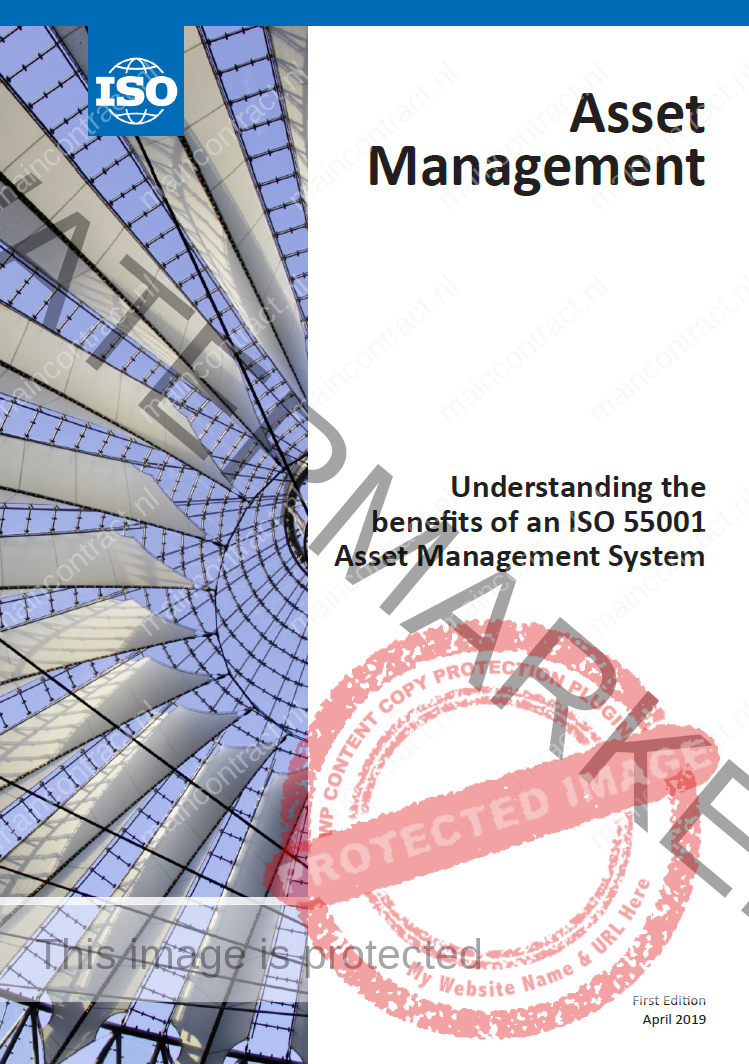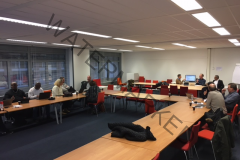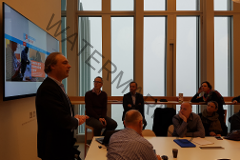![]()
People have been caring for assets since mankind first invented tools. Over time, organizations have developed disciplines and specialist functions to create, use and care for assets – both tangible and intangible. This is defined as managing assets in the article Managing assets in the context of asset management. Over the last 20 years Asset Management (’the coordinated activity of an organization to realize value from assets’) has emerged as a holistic approach to integrate these activities. Asset Management aims to maximise the total value created for the organization by asset utilisation throughout the assets’ lives, while understanding and managing related risks. Asset Management connects the organization’s goals and objectives with the assets that enable their achievement. An Asset Management System (AMS) supports asset management with systematic coordination of these connections and supports assurance, individual and organizational learning and continual improvement. It provides a systematic approach to perform asset management effectively and derive the value needed from assets to achieve organizational objectives. An AMS is used to realize organizational benefits through wellcoordinated strategies and plans based on observed performance and (potential) changes in the organization’s environment.
![]()
Author: ISO/TC 251 Technical Committee for Asset Management Systems
Everyone is talking about ISO 55001 and the benefits it brings. ISO 55001 is a set of requirements for an Asset Management System. So what is an AMS? How does an AMS contribute to delivering good asset management and ultimately help you to derive value from your asset base?
ISO 55000 defines an AMS as ‘a set of interrelated or interacting elements of an organization to establish policies and objectives for asset management and processes to achieve those objectives’. An AMS is a management system for managing the asset management activity (i.e. not directly managing the assets); it does so systematically focused on value, alignment of action, leadership, and assurance. An effective AMS:
- Facilitates an organization’s achievement of its purpose, mission and strategic goals;
- Ensures the organization can do asset management, which means that decision makers and stakeholders are aware of and able to proactively make risk, cost and performance trade-offs;
- Demonstrates to internal and external stakeholders (employees, customers, regulators, insurers etc.) the organization’s intention and capability to do asset management properly (i.e. managing the assets’ performance in coordination with the associated risks and costs over their lifecycle, improving overall organizational performance).
An organization can gain more value more consistently by using ISO 55001 to establish its AMS.
An analogy ?
Think about gardening as a simple analogy to help explain the relationship between asset management and the asset management system. The activities of choosing and acquiring plants, installing them, caring for them and deriving value from them (enjoyment, produce, shade, compost etc.) represent asset management. The processes associated with gardening such as understanding what we want and checking th2 we have achieved those objectives competently and efficiently are the Asset Management System.
This would include having processes to make sure our gardeners are competent and using the right tools/techniques/seeds/fertilizers etc. The asset management system provides assurance that the activities are coordinated – no walking through flower beds that are recently sown to tend to the vegetables – and produce maximum value – which combination of vegetation best fits the purpose of the garden? The actual activities of digging, planting, pruning etcetera would be the equivalent of Managing Assets.
Consider an organisation managing a road network. Designing, building and maintaining the roads are ‘managing assets’ activities. ‘Asset management’ is the coordination of these activities such that the roads network can consistently pass traffic at acceptable costs without unacceptable risk of for example traffic jams or unsafe road conditions.
The ‘asset management system’ processes include: understanding road users’ current and future transportation needs, assuring and checking that these needs are met and making improvements where necessary. The AMS includes processes to ensure the organisation’s personnel are competent and use the right tools, techniques and materials. The AMS provides assurance that the activities are coordinated to generate the desired value at acceptable cost and risk.
Consider a factory producing cheese. The activities of acquiring the factory’s machines, installing them and maintaining them are ‘managing assets’ (in this case, the factory’s machines). When those activities are coordinated so as to consistently produce the quantity and types of cheese wanted by customers at competitive prices and with acceptable business risks, this can be called asset management.
The AMS is the processes associated with this, such as understanding what the customers and other stakeholders want, assuring and checking that this is achieved and driving improvement where necessary. The AMS includes processes to make sure the factory’s personnel are competent and use the right tools, techniques and materials. The AMS provides assurance that the activities are coordinated, for example, carefully planning and installing new equipment to make sure the factory is ready to produce new types of cheese in the necessary volumes in time for product launch, so the factory provides maximum value.
What an Asset Management System Does
Using an ISO 55001 compliant AMS supports the following activities, all of which are essential for good asset management:
- Analysis and understanding of the organization’s context and the needs and expectations of its stakeholders, to translate the stakeholders’ perception of value into an asset management policy, objectives and a Strategic Asset Management Plan (SAMP)
guiding asset management decision-making; - Assurance of adequate support for effective asset management including resources, competence, awareness, communication and information;
- Ensuring the organization’s structure, people, processes, supporting technology and IT systems are coordinated with each other and in alignment with operating requirements;
…Click here for the full article
![]()
Click for full ArticleDiscuss or give your opinionFollow on FacebookFollow on Twitter
Related Article
https://maincontract.nl/asset/hu-recognized-iam/
Why “Alignment” in Asset Management in accordance with the NEN-ISO 55000
Tags: Article, Assetmanagment, Risk











